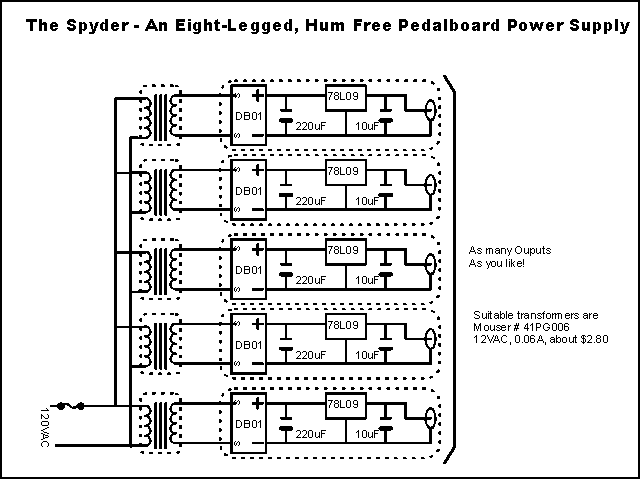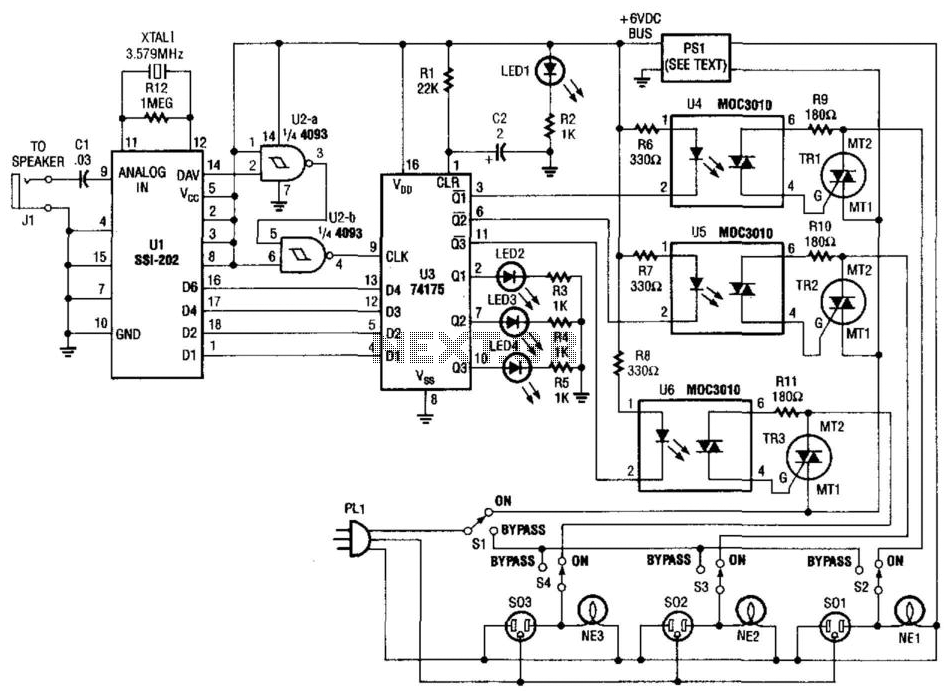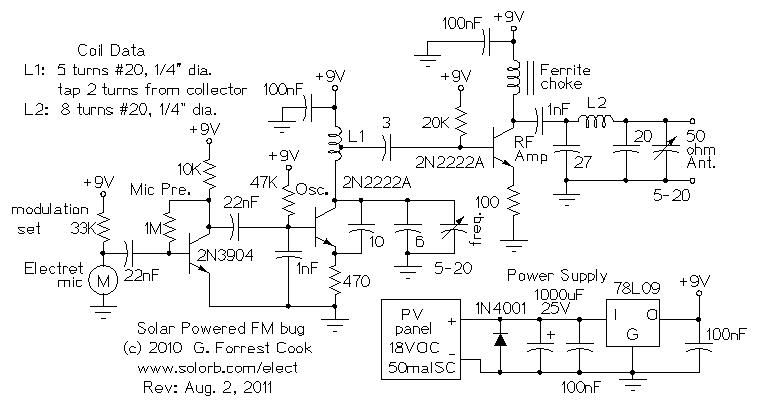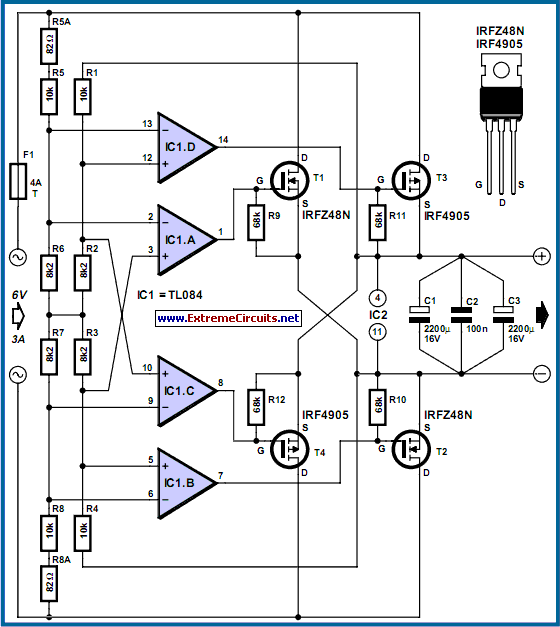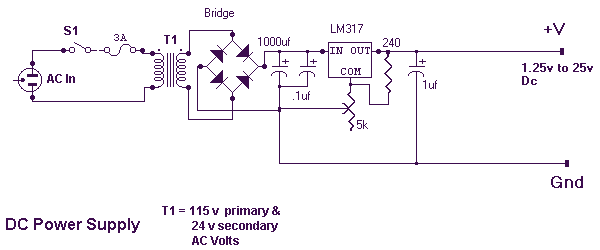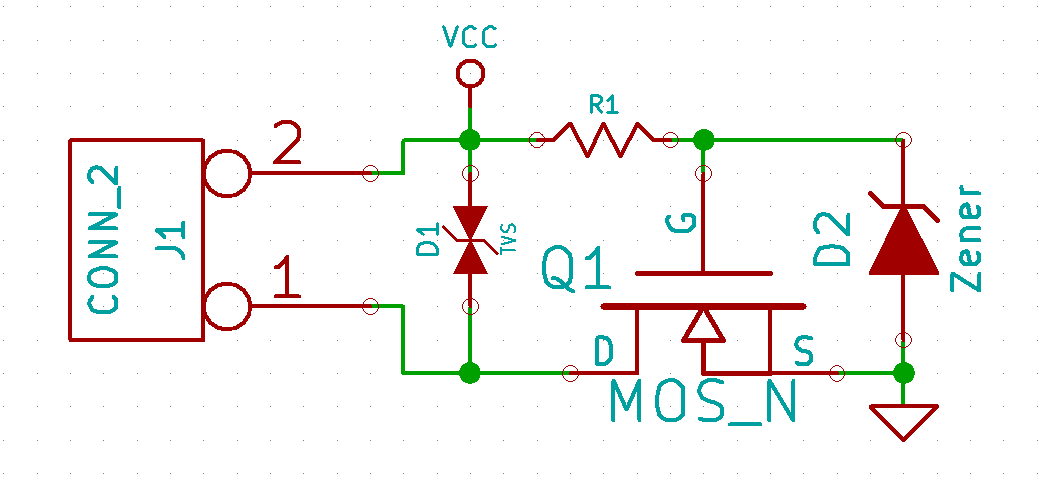
50W Offline Switching Power Supply
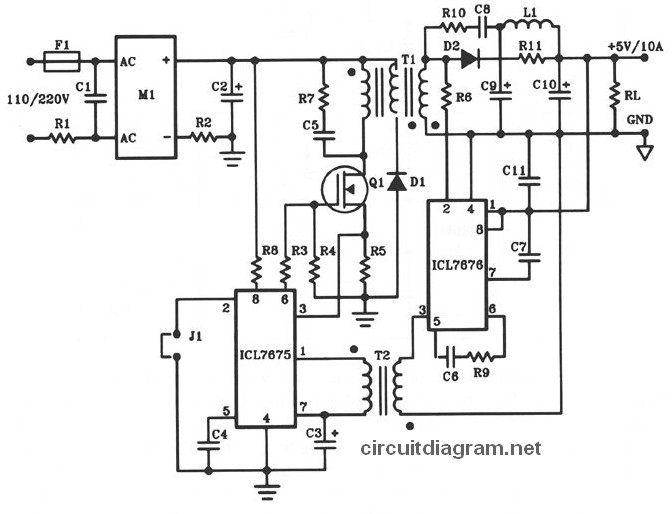
The following diagram illustrates the design of a 50W offline switching power supply circuit. This circuit is powered by a MOSFET, specifically the BUZ80A/IXTP4N8 for 220V AC input and the GE IRF823 for 110V AC input voltage. The output voltage is 5VDC with a maximum current of 10A. The schematic diagram includes a component list. Additionally, there is a 50W audio power amplifier circuit powered by the single IC STK4036II, which utilizes a heatsink to prevent overheating. The STK4036II features a compact package suitable for thin-type audio sets and is part of a pin-compatible series with outputs ranging from 20W to 200W, designed for easy heatsink integration to dissipate heat in thin stereo sets. The circuit also includes a constant-current design. Furthermore, there is an audio amplifier circuit based on the TDA7294, which is a high-quality audio class AB amplifier suitable for hi-fi applications. It boasts very low noise and distortion, wide bandwidth, and good output current capability, allowing it to deliver high power into both 4Ω and 8Ω loads. Another amplifier circuit features the TDA1514A from Phillips, which is a hi-fi power amplifier capable of 50W output, designed for use in radio, television, and other audio applications. The high performance of this IC meets various requirements. Lastly, there is a high output power amplifier based on the STK-1050 IC, which does not require externally connected emitter resistors. The values of the emitter resistors have been carefully optimized to provide superior performance, allowing for better supply voltage utilization and enabling the design of power supply voltages that are approximately 0.7V lower (for RL=4Ω) than those required for previous models.
The 50W offline switching power supply circuit is designed for efficient power conversion, utilizing MOSFETs to handle different AC input voltages. The choice of BUZ80A/IXTP4N8 and GE IRF823 ensures compatibility with both 220V and 110V AC inputs, respectively, allowing for versatile applications in various regions. The output specification of 5VDC at 10A is suitable for powering a variety of electronic devices, ensuring stable performance under load.
The integration of the STK4036II audio amplifier circuit into the design highlights an emphasis on audio fidelity and thermal management. The compact design of the STK4036II allows it to fit into slim audio systems while maintaining high performance. The use of a heatsink is crucial in this setup, as it helps manage the thermal output, ensuring the IC operates within safe temperatures during extended use.
The TDA7294 amplifier circuit further enhances the audio capabilities, providing a high-quality class AB amplification solution. This IC is particularly well-suited for high-fidelity applications, where low distortion and noise are critical for sound quality. Its ability to deliver substantial power into different load impedances makes it a versatile choice for audio engineers.
The TDA1514A serves as another option for audio amplification, emphasizing its suitability for various audio applications, including consumer electronics. Its design is optimized for high performance, making it a reliable choice for audio systems that demand quality output.
Finally, the STK-1050 power amplifier circuit is noteworthy for its design simplicity, eliminating the need for external emitter resistors, which streamlines the circuit layout and enhances reliability. The optimized emitter resistor values contribute to improved performance characteristics, allowing for lower supply voltage requirements while maintaining efficient operation.
Overall, this comprehensive circuit design showcases a blend of power supply and audio amplification technologies, catering to diverse electronic applications with an emphasis on efficiency, performance, and reliability.The following diagram is the 50W offline switching power supply circuit design. The circuit powered by a MOSFET. BUZ80A/IXTP4N8 for 220V AC voltage input and GE IRF823 for 110V AC input voltage. The output will be 5VDC with electric current up to 10A. The schematic diagram: Component list: The schematic shows a 50-W power supply. Here the 50W AF power amplifier circuit powered with single IC STK4036II. Use heatsink to prevent overheating on the IC. STK4036II features: Compact package for thin-type audio sets Member of pin-compatible series with outputs of 20 to 200W Easy heatsink design to disperse heat generated in thintype stereo sets Constant-current circuit. This is a great audio amplifier circuit based on single power IC TDA7294. TDA7294 is intended for use as a high quality audio class AB amplifier in hi-fi applications. It has very low noise and distortion, wide bandwidth and good output current capability, enabling it to supply high power into both 4 © and 8 © loads.
. Here the another amplifier circuit with single power IC from Phillips, TDA1514A. This is a hi-fi power amplifier circuit with 50W power output. The TDA1514A integrated circuit is a hi-fi power amplifier for use as a building block in radio, tv and other audio applications. The high performance of the IC meets the requirements of. This is a high output power amplifier based on power amplifier IC STK-1050. STK-1050 Features: Does not require externally connected emitter resistors. Values of emitter resistors have carefully been reviewed to provide superior characteristics. Better supply voltage utilization permits designing power supply voltage that are about 0. 7V (for RL=4ohms) lower than those required for previous. 🔗 External reference
The 50W offline switching power supply circuit is designed for efficient power conversion, utilizing MOSFETs to handle different AC input voltages. The choice of BUZ80A/IXTP4N8 and GE IRF823 ensures compatibility with both 220V and 110V AC inputs, respectively, allowing for versatile applications in various regions. The output specification of 5VDC at 10A is suitable for powering a variety of electronic devices, ensuring stable performance under load.
The integration of the STK4036II audio amplifier circuit into the design highlights an emphasis on audio fidelity and thermal management. The compact design of the STK4036II allows it to fit into slim audio systems while maintaining high performance. The use of a heatsink is crucial in this setup, as it helps manage the thermal output, ensuring the IC operates within safe temperatures during extended use.
The TDA7294 amplifier circuit further enhances the audio capabilities, providing a high-quality class AB amplification solution. This IC is particularly well-suited for high-fidelity applications, where low distortion and noise are critical for sound quality. Its ability to deliver substantial power into different load impedances makes it a versatile choice for audio engineers.
The TDA1514A serves as another option for audio amplification, emphasizing its suitability for various audio applications, including consumer electronics. Its design is optimized for high performance, making it a reliable choice for audio systems that demand quality output.
Finally, the STK-1050 power amplifier circuit is noteworthy for its design simplicity, eliminating the need for external emitter resistors, which streamlines the circuit layout and enhances reliability. The optimized emitter resistor values contribute to improved performance characteristics, allowing for lower supply voltage requirements while maintaining efficient operation.
Overall, this comprehensive circuit design showcases a blend of power supply and audio amplification technologies, catering to diverse electronic applications with an emphasis on efficiency, performance, and reliability.The following diagram is the 50W offline switching power supply circuit design. The circuit powered by a MOSFET. BUZ80A/IXTP4N8 for 220V AC voltage input and GE IRF823 for 110V AC input voltage. The output will be 5VDC with electric current up to 10A. The schematic diagram: Component list: The schematic shows a 50-W power supply. Here the 50W AF power amplifier circuit powered with single IC STK4036II. Use heatsink to prevent overheating on the IC. STK4036II features: Compact package for thin-type audio sets Member of pin-compatible series with outputs of 20 to 200W Easy heatsink design to disperse heat generated in thintype stereo sets Constant-current circuit. This is a great audio amplifier circuit based on single power IC TDA7294. TDA7294 is intended for use as a high quality audio class AB amplifier in hi-fi applications. It has very low noise and distortion, wide bandwidth and good output current capability, enabling it to supply high power into both 4 © and 8 © loads.
. Here the another amplifier circuit with single power IC from Phillips, TDA1514A. This is a hi-fi power amplifier circuit with 50W power output. The TDA1514A integrated circuit is a hi-fi power amplifier for use as a building block in radio, tv and other audio applications. The high performance of the IC meets the requirements of. This is a high output power amplifier based on power amplifier IC STK-1050. STK-1050 Features: Does not require externally connected emitter resistors. Values of emitter resistors have carefully been reviewed to provide superior characteristics. Better supply voltage utilization permits designing power supply voltage that are about 0. 7V (for RL=4ohms) lower than those required for previous. 🔗 External reference
